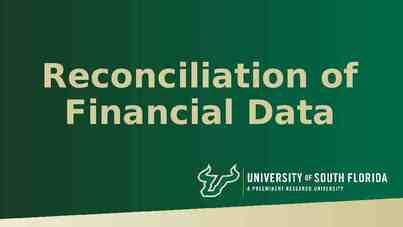Benefits of a Course Alignment Matrix: Avoid Ending up Someplace Else
17 Slides2.71 MB
Benefits of a Course Alignment Matrix: Avoid Ending up Someplace Else Dr. Maria Christian, Assistant Professor of Higher Education Leadership Jerol Skinner, Coordinator of Academic Services and Instructional Designer
Overview Justification for NSU’s Online Educator Certificate Courses Discussion of QM Standards 2, 3 and 4 Review of Revised Bloom’s Taxonomy Introduction to the Course Alignment Matrix for objectives, assessment, and instructional materials Source: https://mosaicprojects.wordp ress.com/tag/pmo/
Justification NSU’s Online Educator Certificate (2013) Policy – Level 1: LMS training implemented 2013 – Level 2: Course Design implemented 2014 – Mentor & Course Reviewer: continuous improvement process implemented 2016 OSHRE - 3.16.5.A.1: Faculty should receive training and faculty development to achieve competency in the technology required for teaching at a distance. NC-SARA & HLC expectations - Uses Council of Regional Accrediting Commissions’ (C-RAC) Interregional Guidelines for the Evaluation of Distance Educ ation 2011 :
Justification 3. Online Learning is incorporated into the institution’s systems of governance and academic oversight (MSCHE Standard 4). The institution’s faculty have a designated role in the design and implementation of its online learning offerings The institution ensures the rigor of the offerings and the quality of the instruction Approval of online courses and programs follows standard processes used in the college or university Online learning courses and programs are evaluated on a periodic basis
Justification 6. Faculty responsible for delivering the online learning curricula and evaluating the students’ success in achieving the online learning goals are appropriately qualified and effectively supported. Online learning faculties are carefully selected, appropriately trained, frequently evaluated, and are marked by an acceptable level of turnover The institution’s training program for online learning faculty is periodic, incorporates tested good practices in online learning pedagogy, and ensures competency with the range of software products used by the institution Faculty are proficient and effectively supported in using the course management system Faculty members engaged in online learning share in the mission and goals of the institution and its programs and are provided the opportunities to contribute to the broader activities of the institution
Online Educator Courses (OEC 1, OEC 2, ROC) Jerol Skinner, Coordinator of Academic Services (Center for Teaching and Learning) Dr. Sophia Sweeney, Assistant Professor Teacher Education Rick Shelton, Coordinator of Academic Services (Center for Teaching and Learning) Chad McLane, Director of Center for Teaching and Learning
Source: Applying the QM Rubric 2011-2013, Quality Matters Workshop pdf
Source: Applying the QM Rubric 2011-2013, Quality Matters Workshop pdf
Source: Applying the QM Rubric 2011-2013, Quality Matters Workshop pdf
Before we can understand a concept, we have to remember it Before we can apply the concept, we must understand it Before we analyze it, we must be able to apply it Before we can evaluate its impact, we must have analyzed it Before we can create, we must have remembered, understood, applied, analyzed, and evaluated (OEC 2, 2015).
Clear direction is good
Questions and Comments? Maria Christian, Ed.D. P: 918-449-6522 Assistant Professor of Higher [email protected] Education Leadership Department of Educational Leadership 3100 E. New Orleans Broken Arrow, OK 74014 www.nsuok.edu Jerol Skinner P: 918-444-5851 Coordinator Of Academic Services, [email protected] Instructional Designer Center for Teaching and Learning W. Roger Webb Educational Technology Center 618 Tahlequah, OK 74464 www.nsuok.edu






















